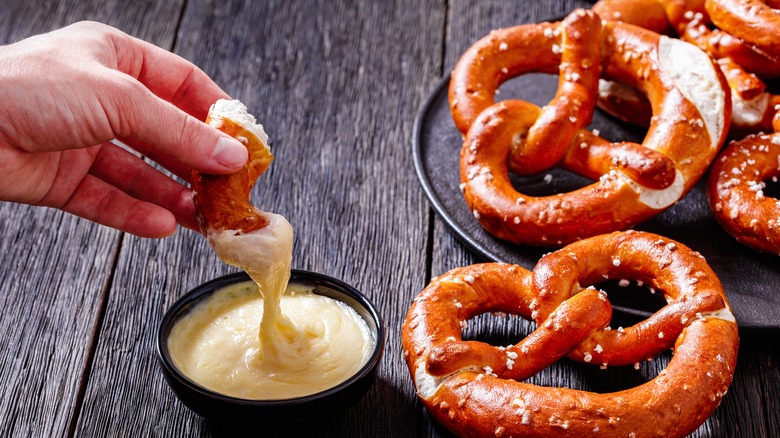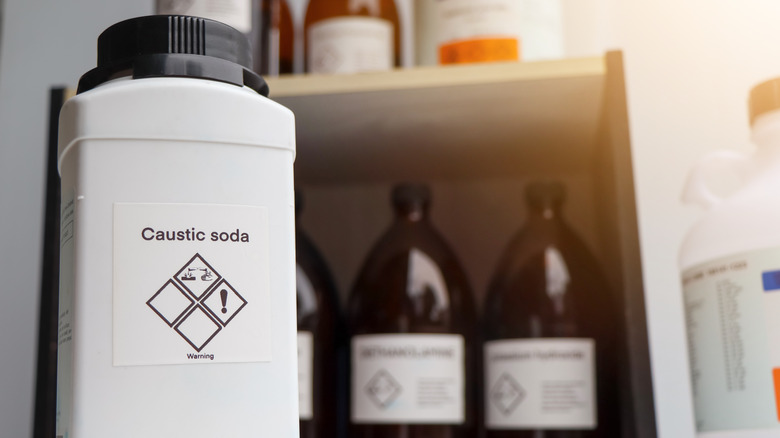The Secret Behind The Flavor Of Commercial Soft Pretzels Is Actually Lye
There's an unspoken rule on the foodie internet that the more iconic a regional baked good, the more desperately people try to unpick its secrets. Whether it's us searching for the reason French baguettes are so good, The Guardian exploring how New York bagels took over the UK, or PokPok founder Andy Ricker trying to recreate Saigon-style Banh Mi for the Los Angeles Times — there's something about geo-locked bread products that compels people to put their baking science hats on and start experimenting. Things are no different regarding the most iconic bread of the German-speaking world — the pretzel.
The history of the soft pretzel goes back over 1,400 years, initially created by Italian monks as an egg-free bread that people could still eat during Lent. Pretzels gained popularity across Europe, but were especially "adored" in Germany, according to CBS New York. Their legendary inclusion in Swiss royal weddings is one theory for the origin of the phrase "tying the knot," and as the bread was cheap to make, pretzels were often given as alms to keep the poorest in European society going during the Middle Ages, per History.
The quintessential soft pretzel experience is all about the interplay of textures. As Jeffrey Hamelman, director of the King Arthur Flour Baking Education Center told The New York Times, "The goal is to have two distinct eating experiences, one crunchy and one fluffy, in a single pretzel."
So, how do German bakers get that all-important finish and flavor? The answer is lye.
Lye in pretzels
Lye, also known as caustic soda, isn't really known as a baking ingredient, and for good reason. As Smithsonian Magazine explains, lye is mainly used for soapmaking and other cleaning applications that make use of its chemistry. Though to say that there is lye 'in' pretzels is a tad misleading — authentic German laugenbrezel are dipped in diluted lye before baking, according to NPR, so saying there's lye 'on' pretzels might be more accurate.
Dipping unbaked pretzels into lye is essential to avoid insipid, pale bread. As NPR notes, alkaline lye encourages Maillard reactions on the surface of the pretzel, which are crucial for crunchy crust construction as well as imparting a particular flavor to the pretzel. It evaporates in the oven once this job is done, so there isn't lye on any pretzel you'll eat (via Saveur).
Lye is dangerous though, and it can be hard to get your hands on, because if you get it on your hands, you'll regret it. Per the CDC, lye can burn any bodily tissue it comes into contact with — although many recipes that include lye suggest wearing gloves, it's also dangerous to eyes and can cause lung damage if accidentally inhaled.
If you're interested in making German-style soft pretzels at home without lye, both NPR and Jernej Kitchen reveal it's possible to make an alkaline dough dip using baking soda — and per The New York Times, you can even bake the baking soda first to increase the alkalinity and get that true pretzel crunch.

